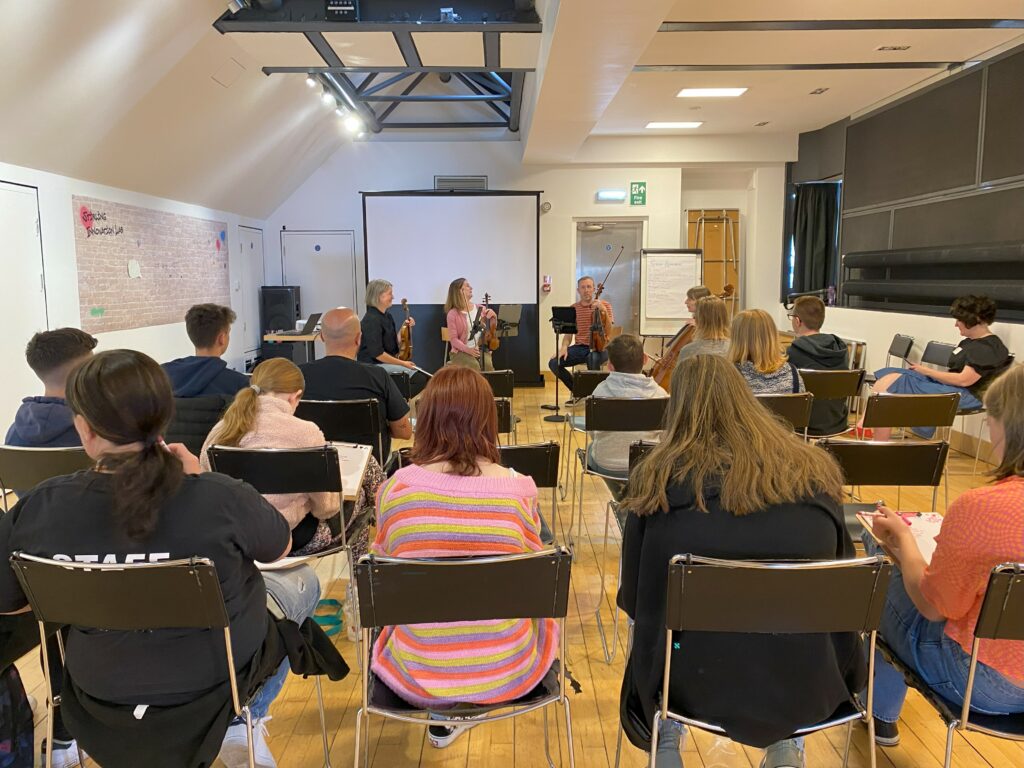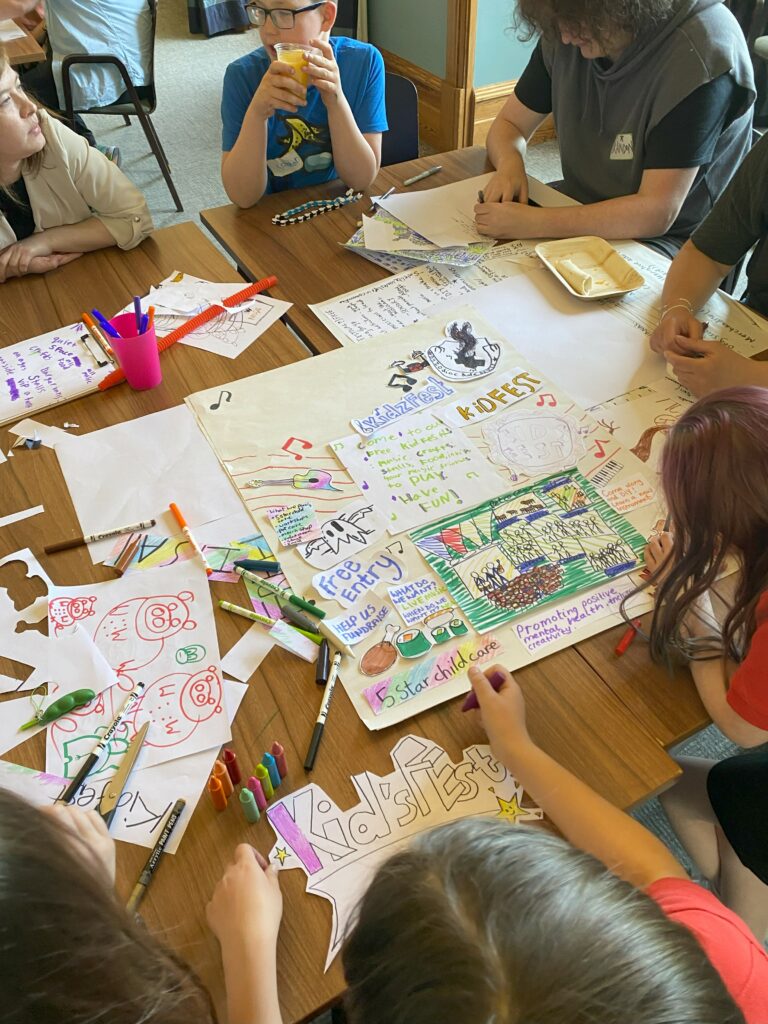Research identifies ways more children and young people in Scotland can experience the mental health and wellbeing benefits of live music.
The Live Music and Mental Health project, delivered by Children in Scotland, Scottish Ensemble and the University of Stirling between May and October 2023, explored the barriers to children and young people engaging with live music. It supported them to co-create solutions to enable better access to support their mental health and wellbeing. The findings from the project have been published in a new report today.
In a series of in-person workshops, referred to as Innovation Labs, in Inverness, Stirling and East Glasgow, over 90 attendees, including children and young people, youth workers, music professionals and mental health practitioners came together to experience a range of live music performances and activities. The groups engaged in more traditional audience experiences as well as interactive performances exploring mindfulness and physical space.
The project heard about the key barriers to engaging with live music experiences which included cost, transport, safety, and additional support needs. The findings present new ideas for future live music interventions that could support children and young people’s mental health and wellbeing.
Live Music and Mental Health Report
“Collaboration is at the heart of what we do at Scottish Ensemble. The Live Music and Mental Health Project gave us an important opportunity to engage closely with children and young people as collaborators, so we as an arts organisation can better understand the interests and needs of young audiences.
“Live music is an interactive experience. Through the Innovation Labs we saw first hand the impact of live music on children and young people. The workshop format enabled the performers to actively engage with their audience, hearing in real time the impact of different approaches to performance on young people’s feelings and emotions.
“The project has helped us deepen our understanding of the important connection between audience and performer, and the barriers that audiences, in particular young audiences, face when accessing live music. We will use the findings of this report to investigate how best we can start to remove barriers children and young people face in accessing our work, and explore new ways of co-producing work with young people in the future.”

